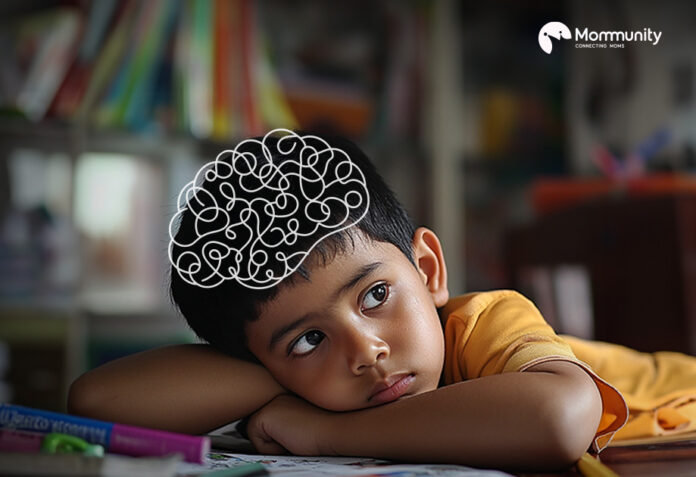Have you ever felt that your baby is so tired, but his brain is full of energy? It’s a common situation these days experienced by many people even with children as well. Kids who have an underactive body might have an overactive brain. This can be a cause of the unhealthy well-being of children.
In today’s fast-paced society, this situation is increasing day by day, where kids have an underactive body leads to an overactive brain. In this blog, we’ll learn more about the underactive body and overactive brain, thier causes, signs, and strategies.
What Does It Mean?
The reason for an underactive body in children is a lack of physical activity or exercise. It implies that children are less active as per thier age. There are various reasons for an underactive body, including personal preferences, lifestyle habits, or external restrictions like limited access to play areas.
Conversely, an overactive brain is denoted by excessive mental activity, which might cause restlessness, daydreaming, concentrating issues on any task, or even anxiety.
3 Causes and Implications
1. Lifestyle Choices
In the digital era, kids feel attracted to more seated activities like playing video games or watching television. This shift from active play to screen time can cause an underactive body.
2. Psychological Factors
Children who aren’t physically active may experience a hurry of mental energy. This can cause an overactive brain, where thoughts are never-ending, leading to issues such as anxiety or sleep disturbances.
3. Impact on Health
This imbalance between physical and mental activity can also affect the child’s health. This can be the reason for obesity or poor physical fitness. Also, it might hamper their ability to manage stress and regulate emotions.
4 Signs for Recognization
If you are doubting that your child has an underactive body and an overactive brain, you must know these signs:
1. Reduced Physical Activity
Kids those are might not be interested in playing outside or sports-related activities as much as before. Maybe they have developed a liking for indoor activities or just sitting around.
2. Mental Tiredness
Kids are not engaged in much physical activity but still may feel very tired. This can be surprising, as the exhaustion is mental (especially for those who have not been very active).
3. Problem Paying Attention
He may find it difficult to pay attention to his studies or any other work. He might also be getting too forgetful or having problems with concentration.
4. Feeling Restless and Anxious
They might be nervous. They might be tired. They might also find it difficult to sit still or be nervous.
4 Strategies to Rebalance Activity Levels
To address this imbalance, consider the following strategies:
1. Create a Consistent Schedule
- Plan ahead
Set a schedule time for physical activities like walking, biking, or swimming. This helps to make regular exercise in your child’s routine.
- Be specific
It is necessary to decide what type of physical activity, duration, and frequency. For example, you could plan for a 30-minute walk every morning and a 20-minute swim on Wednesdays.
2. Reduce Screen Time
- Set limits
Set a limited amount of time for the usage of electronic devices like computers, tablets, and smartphones by your children. This will help them to find other, more active ways to spend their time.
- Find alternatives
Avoid activities that involve screens, such as playing outside, reading books, or doing puzzles.
3. Promote Social Interaction
- Arrange playdates
You may set up playdates with friends or neighbors so your child can have fun and be active at the same time.
- Join group sports
Enroll your child in sports teams or clubs where they can participate in physical activities and meet new people.
4. Promote Mental Well-being
- Teach relaxation techniques
Introduce your child to mindfulness practices like deep breathing or yoga. These can help them manage stress and anxiety.
- Create a calm environment
Boost relaxation and quiet time to help your child balance their mental and physical activity.
What You Can Do Next
Incorporating more physical activities into your child’s daily routine is necessary. You can start small, with short play sessions outside or indoor games that require physical movement, gradually increasing the activity level.
The Final Note
In today’s fast-paced society, it’s increasingly common for children to have an underactive body and an overactive brain. This imbalance can negatively impact their overall well-being, both physically and mentally.
By recognizing the signs and implementing strategies to rebalance activity levels, parents and caregivers can help their children develop healthier habits and achieve optimal development. Remember, a balanced approach that combines physical activity with mental well-being is essential for a child’s holistic growth.
FAQs
Q1: How much physical activity is recommended for children?
Children should engage in at least 60 minutes of moderate to vigorous physical activity each day.
Q2: Can excessive screen time really affect my child’s brain?
Yes, excessive screen time has been linked to increased restlessness, trouble sleeping, and difficulty concentrating.
Q3: What are some physical activities suitable for children who don’t like sports? Activities such as dancing, hiking, or even vigorous play like tag can be excellent alternatives.




